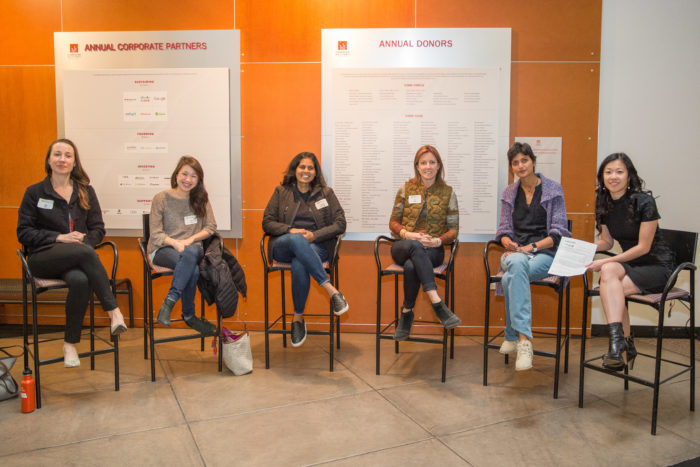[This is the second post of the "Hiring for Startups 101" blog series] Once you…
Entrepreneurship
With March being International Women’s Month, I had the honour of moderating an event, “Women Shaping the Valley: A Celebration of Female Technologists” at the Computer History Museum (where I sit as a member of their NextGen board). We had an incredible panel of female technologists: Julia Grace (Senior Director of Infrastructure Engineering, Slack) Amber Feng […]
[This is the second post of the "Hiring for Startups 101" blog series] Once you…
How to hire for your startup is one of the most crucial (if not the…
With March being International Women’s Month, I had the honour of moderating an event, “Women Shaping the Valley: A Celebration of Female Technologists” at the Computer History Museum (where I sit as a member of their NextGen board).
We had an incredible panel of female technologists:
Preparing questions for a “Women in Tech” panel was admittedly difficult for me, as I’ve written before. I wanted to highlight the technical accomplishments of the panelists because it was an incredible opportunity to learn from them. After all, how often do you have senior product managers and engineering directors from iconic companies in one place? So, we discussed management, prioritization, scaling a business, and other questions where their answers spoke to the impact of their work – with less focus on gender and more on character and results.
However, the lack of diversity and inclusion in tech are very real issues and we’d be remiss to ignore them. Given the launch of the Founders for Change initiative last week (of which our founders have also pledged), I thought that I’d add a tip to the jar from the panel on how to improve balance in the workplace.
Everyone commented that they are proactively working towards removing as many cognitive biases as possible during the hiring process – for instance, conducting “blind” interviews where you don’t know anything about the candidate and simply evaluate them on their ability to pass a programming test. In another example, Shopify uses a hiring framework based on four “predictors of success”: authentic in interactions, fully-engaged, impact-driven, and self-awareness. As you can see, these traits are independent of gender and race.
We also talked about the scarcity of engineering talent and consequently, the proliferation of bootcamps that graduate developers. I asked if our panelists’ saw differences in “classically trained” versus “bootcamp” engineers, and whether the latter might help companies build a more diverse team.
Many noted that those who have made a transition into software development later in their careers have shown to be valuable contributors with a proven record of putting themselves in the position to learn. In fact, the key takeaway for me is that we should keep an open mind to those who aren’t classically trained because you’d be surprised at just how transferrable skills are to tech. I saw this firsthand at Insight Data Science when we helped PhDs transition to careers in data science.
So the “pipeline” excuse is just an excuse. By broadening the target pool and thinking outside of the box, you can find some incredible hires. And while we still have a long way to go until engineering departments reflect the demographics of the population as a whole, after this event, I feel more optimistic than ever that we are moving in the right decision. Thank you to Julia, Amber, Prashanthi, Ellen, and Hema for giving your time to pay it forward on the panel and being the role models that you are for today and tomorrow’s generation.
 Julia Grace, Amber Feng, Prashanthi Ravanavarapu, Ellen Dunne, Hema Budaraju & Me!
Julia Grace, Amber Feng, Prashanthi Ravanavarapu, Ellen Dunne, Hema Budaraju & Me!
Photo Credit: Douglas Fairbairn Photography / Computer History Museum
Crypto / Blockchain, Portfolio, Version One
We’re excited to announce our investment in Loon, a Canadian company building the country’s first regulated digital dollar. Version One led Loon’s $3M pre-seed round, alongside Garage Capital and a group of strategic Canadian angel investors. Loon is on a mission to create trusted, transparent payment infrastructure for Canada’s digital economy — starting with CADC, […]
As 2015 comes to an end, it’s time to reflect on what we’ve done and…
As the Internet evolves, the venture capital business starts evolving and we have been seeing…